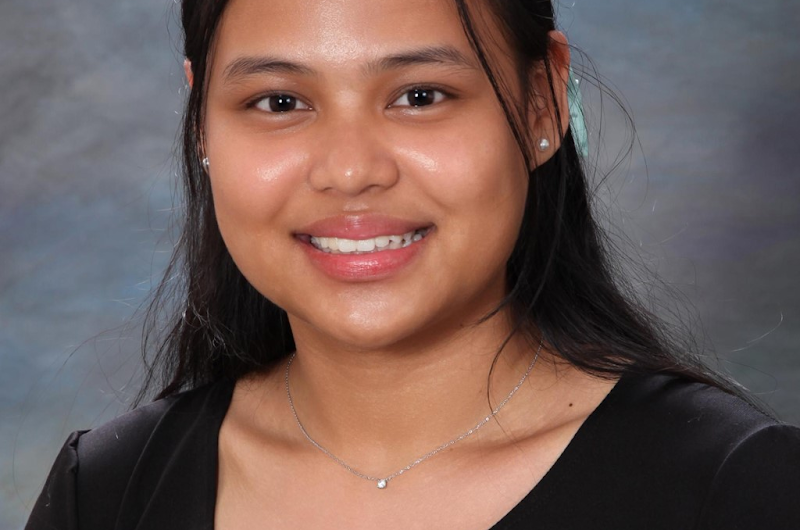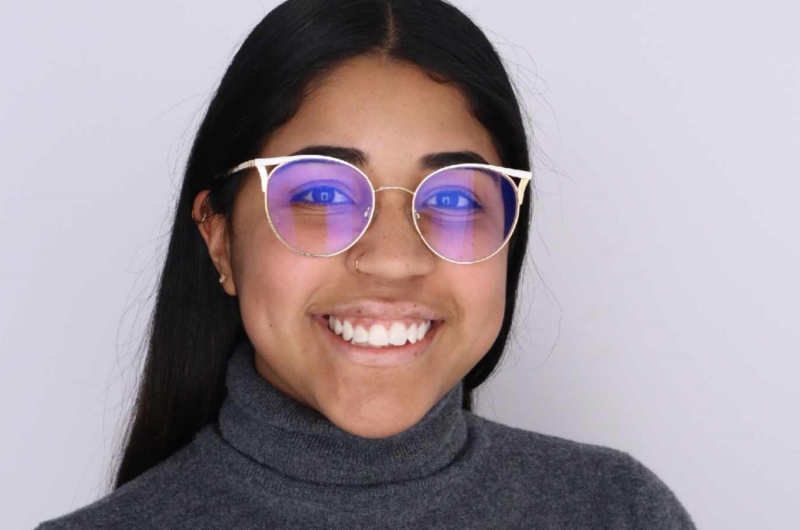Welcome to the first installment of the College Forward (now College Possible Texas) blog series: Real Talk: Being a person of color (POC) and a predominantly white institution (PWI). These stories are of course not indicative of every student of color’s experience at their PWI. However, other students of color reading may find parallels in these accounts due to having similar experiences at their respective campuses. Every person’s story carries value in the holistic experience colleges have to offer. Thank you, Emily, for boldly sharing your story about diversity at the University of Denver with us.
Emily, Class of 2023
I wanted to take “getting out of your comfort zone” to a higher level for myself. If you get the chance to know me, you would understand that I enjoy trying new things, but what university I chose to attend was way out of my comfort zone, even for me.
My name is Emily Martinez, the oldest of five, and a first-generation college student. I was born and raised in the capital city of Austin, Texas, after my mother and grandmother moved from the border city of Laredo. I describe myself as half Mexican and Salvadorian as my father is from El Salvador. It’s important to introduce a bit of my family background because it played a huge role in my decision first to enroll and then stay at this university. I currently attend the University of Denver (DU) in Denver, Colorado.
Why did I decide to attend a university out of state? Well, it’s a long story that involves other universities, but I’ll fill you in on why I chose to apply in the first place. DU has one of the best Criminology departments in the country, which is my current major. Along with the department, I was very interested in their study abroad program. I learned that about 77.5% of undergrads go on to study abroad, usually during their junior year. The university does a good job of making sure the costs for studying abroad are paid for. I met people who went to Mexico, Panama, Fiji, Spain, and China, who all describe studying abroad as their most favorite memory of their college experience. These were facts that I knew before stepping onto the DU campus, and once I did, I was not prepared for what came next.
Not being able to make connections with people on campus, from students to the staff, felt as if I were dropped off and left in the middle of the desert.
Real Talk at University of Denver
I never paid close attention to the diversity at the University of Denver when applying because I was unaware of how important that was. I didn’t even know that it was a PWI (Predominantly White Institution), and now I don’t recall ever seeing diversity statistics on their website or brochures. The lack of diversity at the University of Denver was one of the first things I learned as I stepped on campus. My family was one of about seven Latinx families that helped their children move into the first-year residential building.
Inclusion was a word I learned immediately after a few weeks on campus. But I would soon discover how DU was not inclusive. I got my first taste of this once I started seeing posters around campus taped to bathroom mirrors, light posts, and bulletin boards about students of color not being represented on this campus. They were started by saying, “we are the students who…,” one being, “we are the students who are not represented at the HCC.” These posters were posted by anonymous students and were soon taken down, allegedly, by campus safety as a request from a person higher up. I recall reading many of these before they disappeared and was shocked at some of the statistics that were posted. This told me that each minority group was obviously underrepresented but also not given a platform to speak their truth.
A lack of diversity can create isolation
The lack of diversity and inclusion at the University of Denver affected me more than I would have first thought. Right away, my social health was impacted as I had no friends and struggled to make some. I was able to eventually leave my first year with three really good friends, but during the year, they all often went home every weekend since they were locals. I spent many weekends by myself in my dorm when I did not work as the only social gatherings were fraternity or sorority house parties, which never really felt inviting for people of color.
Next came my mental health as I often felt homesick and lonely. Not being able to make connections with people on campus, from students to the staff, felt as if I were dropped off and left in the middle of the desert. Furthermore, in my first month as a DU student, I went to visit the Health Center as I was experiencing returns of my panic attacks. Unfortunately, I did not receive much feedback or help from the doctors as none of them were people of color or could relate to my experiences.
The DU Mascot is the ‘Pioneer,’ which is—in my opinion, and in that of many others—representative of violence, colonialism, and white supremacy.
Did I make the right decision?
After everything I went through in the last year, I have my set impressions of DU after my first year. I contemplated if I made the right decision about attending DU as my experience was a rollercoaster. I learned from DU that they are not forthcoming in acknowledging their lack of diversity or inclusion during the admissions process. Instead, they try to post pictures of students of color on their website to make the university look diverse. I got to know the history of DU and the claim that DU makes about themselves as having “inclusive excellence” or “Multicultural excellence.” The DU mascot is the “Pioneer,” which—in my opinion, and in that of so many others—represents violence, colonialism, and white supremacy. The debate over the name has been ongoing for the past few years, and the university has yet to make changes.
My impressions about DU are different for everyone involved. The Chancellor says he is dedicated to make a change at DU and make it a better, more diverse, and inclusive campus but has yet to take significant action. A majority of the professors are open to all ideas and perspectives as well as acknowledging the power they hold if they are a white professor. This goes along with the majority white students on campus who also want to see change. My impressions of DU are not all bad, but these impressions are significant enough for a student of color.
Taking back power
Students of color have taken power into their own hands by creating and still maintaining affinity groups. There are many student alliances on this campus from LSA (LatinX Student Alliance), BSA (Black Student Alliance), ASA (Asian Student Alliance), and a few more. These alliances were able to help me fit in better, make friends, and fight for change on campus.
The change we need
The change I would like to see on campus would require several posts in order for me to talk all about, but I’ll broaden the spectrum.
- I would like to see Denver University hire staff that are dedicated to making change and allowing minorities to have a platform. I urge the university to actually stick by their commitments and make DU a campus set on “inclusive excellence.”
- I would also like to see the university, as mentioned before, try to get rid of the nickname “Pioneer.” Regardless of what sports donors want, the university knows this name is inappropriate and we should get rid of it as we did our mascot a few years ago.
The students have become forthcoming in the change we want to see, but now the University must act.
Editors Note: The University of Denver launched an Office of Diversity & Inclusion the 2015-16 academic year.



